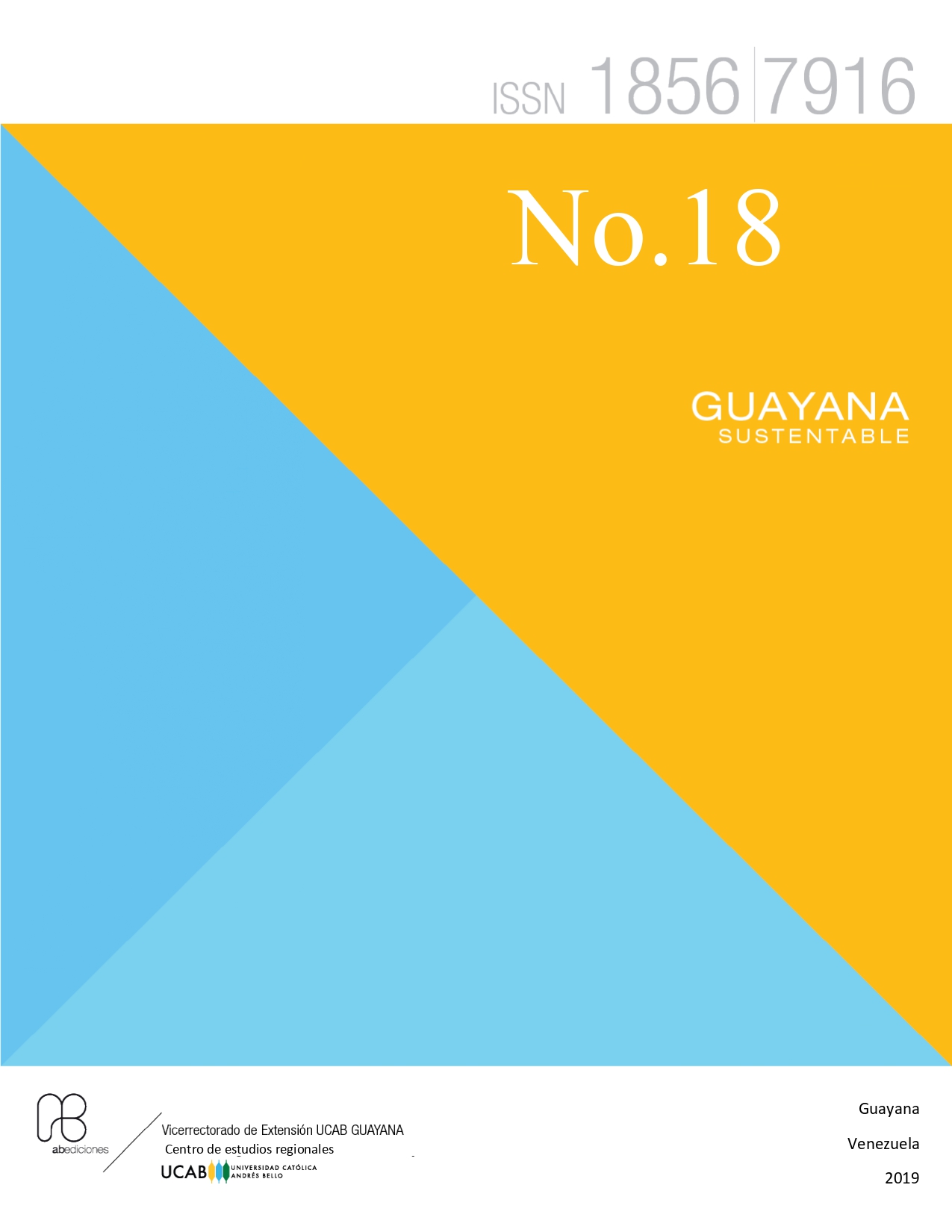Desarrollo Sustentable Para Guayana, Los Retos Y Las Visiones Del Futuro
Abstract
Vice Chancellor of the Andrés Bello Catholic University, Guayana campus, members of the organizing committee of the eighteenth Sustainable Guayana Forum, professors of the Andrés Bello Catholic University, Guayana campus, appreciated students attending the XVIII Sustainable Guayana Forum, ladies and gentlemen.
For me, it is an honor and I am deeply humbled to be invited to deliver this keynote speech within the framework of the XVIII Sustainable Guayana Forum, a distinction that I assume with the greatest spirit of being useful and contributing to the praiseworthy work that has been carried out throughout of these encounters.
On May 15, 2013, I took the floor at the thirteenth Sustainable Guayana forum to speak about the planetary limits that could condition the sustainable development of Guayana, in which I would refer to climate change, the nitrogen and phosphorus cycles, the loss of biodiversity , changes in land use and chemical contamination of water.
In the face of climate change, we must comply with the mitigation measures that we assume in the planned national contributions as an expression of the will to abide by the terms signed in the 2016 Paris Agreement and prepare ourselves by adopting adaptation measures in the face of the inevitable effects of climate change. change
climate; The other four limits must be included in the sustainable development strategies for Guayana to control them at tolerable values or eliminate them definitively.
Published
Issue
Section
License
Los autores que publican en esta revista están de acuerdo con los siguientes términos:
- Los autores conservan los derechos de autor y garantizan a la revista el derecho de ser la primera publicación del trabajo al igual que licenciado bajo una Creative Commons Attribution License que permite a otros compartir el trabajo con un reconocimiento de la autoría del trabajo y la publicación inicial en esta revista.
- Los autores pueden establecer por separado acuerdos adicionales para la distribución no exclusiva de la versión de la obra publicada en la revista (por ejemplo, situarlo en un repositorio institucional o publicarlo en un libro), con un reconocimiento de su publicación inicial en esta revista.
- Se permite y se anima a los autores a difundir sus trabajos electrónicamente (por ejemplo, en repositorios institucionales o en su propio sitio web) antes y durante el proceso de envío, ya que puede dar lugar a intercambios productivos, así como a una citación más temprana y mayor de los trabajos publicados (Véase The Effect of Open Access) (en inglés).

